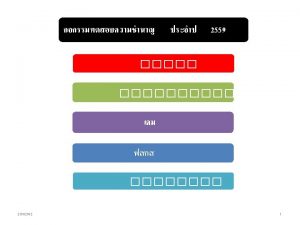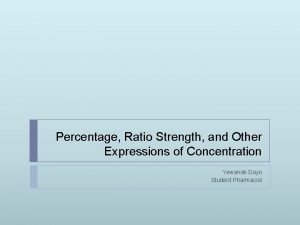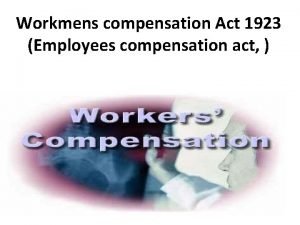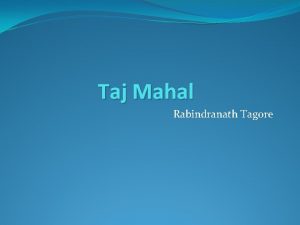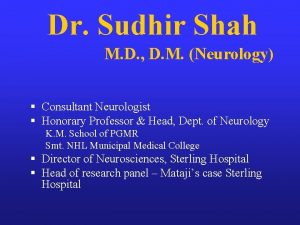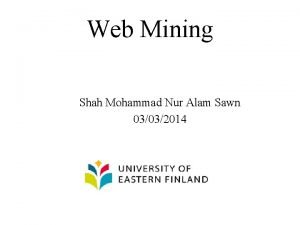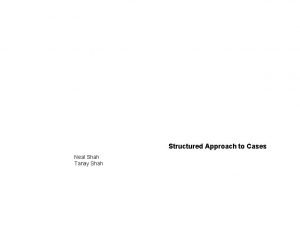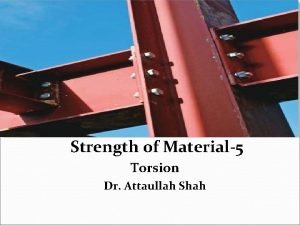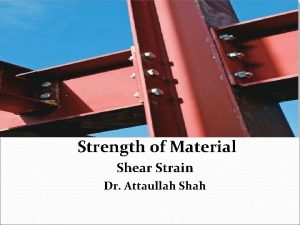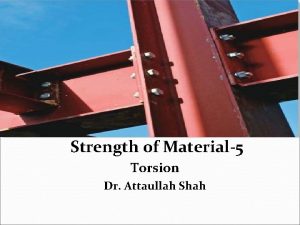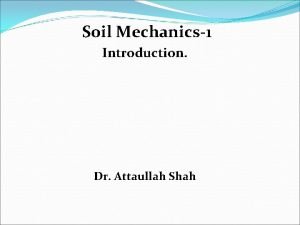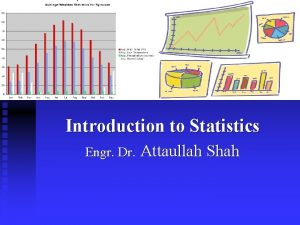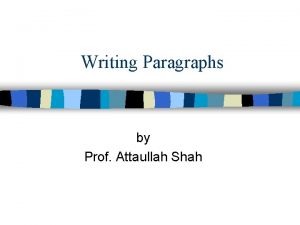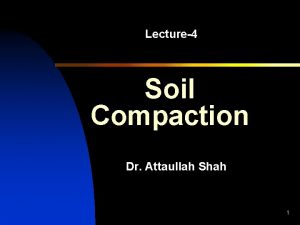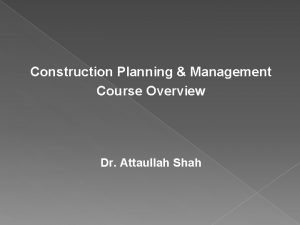Strength of Material1 Introduction Dr Attaullah Shah Theory


















- Slides: 18

Strength of Material-1 Introduction. Dr. Attaullah Shah

Theory of Structures. In the Theory of Structures, actions on the structural elements are defined as everything which may cause forces inside the material, deformations, accelerations etc. , or change its mechanical properties or its internal structure. In accordance with this definition, examples of actions are the forces acting on a body, the imposed displacements, the temperature variations, the chemical aggressions, the time (in the sense that is causes aging and that it is involved in viscous deformations), etc. In theory expounded here we consider mainly the effects of applied forces, imposed displacements and temperature.

Some basic definitions: External forces – Forces exerted by external entities on a solid body or liquid mass. External surface forces – Acting on the boundary surface of a body. Examples of these include the weight of nonstructural parts of a building, equipment, etc. , acting on its structure, wind loads on a building, a bridge, or other Civil Engineering structure. External mass forces –Acting on the mass of a solid body or liquid. i. e. the weight of the material a structure is made of (earth gravity force), the inertial forces caused by an earthquake or by other kinds of accelerations, such as impact, vibrations etc. Rigid body motion – displacement of the points of a body which do not change the distances between the points inside the body. Deformation – Variation of the distance between any two points inside the solid body or the liquid mass.

Mechanics of materials or Strength of Material Aims to find relations between the four main physical entities defined earlier (external and internal forces, displacements and deformations).

Course Plan Teachi ng We ek Topics to be covered One - Introduction to the subject - Types of stresses and strains - Determinate and indeterminate compatibility problems. Two -Compound bars - Temperature stresses. Three - Advanced cases of shearing forces and bending Moment Diagrams for determinate beams. Four - Principle of Superposition. - Relationship between load, shear force and bending moment Five 1 st Quiz - Theory of simple bending, Follow up Assignment#1. Write a note on the importance of the subject of SOM for Civil Engineering Assignment#2

Six Distribution of shear stresses in beams of symmetrical sections Assignment#3 Seven Deflection of beams Using double integration Method Assignment#4 Eight Mid Term Test Nine Deflection by moment area methods. Ten Deflection by Conjugate beam methods. Eleven 2 nd Quiz Combined bending & direct stresses Twelve Columns, types and different formulae for critical load. Thirteen Torsion of circle section. Fourteen Strain energy due to direct load Fifteen 3 rd Quiz Strain energy due to shear, bending and torsion. Sixteen Impact loads Seventeen Impact loads Eighteen Revision Assignement#5 Assignement#6 Assignement#7 Assignment#8 Comprehensive Assignment

Distribution of Marks: Sessional Marks: 60, as per following details: Assignments: 10 Quiz: 10 Mid Semester Exam: 20 Practical/Viva voce Exam: 20 Final End Semester Exam: 40

Stress and Strain Simple stresses are expressed as the ratio of the applied force divided by the resisting area or σ = Force / Area. It is the expression of force per unit area to structural members that are subjected to external forces and/or induced forces. Stress is the lead to accurately describe and predict the elastic deformation of a body. Simple stress can be classified as normal stress, shear stress, and bearing stress. Normal stress develops when a force is applied perpendicular to the cross-sectional area of the material. If the force is going to pull the material, the stress is said to be tensile stress and compressive stress develops when the material is being compressed by two opposing forces. Shear stress is developed if the applied force is parallel to the resisting area. Example is the bolt that holds the tension rod in its anchor. Bearing stress, it is the contact pressure between two bodies. For example when axial force act on a short column or a plate.

Some basic assumptions: 1. The body is homogeneous, i. e. , it is made of the same material in all its parts. 2. The body is isotropic, i. e. , the properties of the material do not depend on direction. 3. The cross section is constant. 4. The body is straight. 5. The load is applied axially along the center line of the body, etc. In essence, we assume that the body is a onedimensional rod. Even in that situation we are implicitly saying that the stress is just an average over the whole body.

Strain In elementary strength of materials, the strain is defined as the change in length over the original length. Strain is dimensionless quantity.

Example A hollow steel tube with an inside diameter of 100 mm must carry a tensile load of 400 k. N. Determine the outside diameter of the tube if the stress is limited to 120 MN/m 2. Solution

Problem The homogeneous bar shown in Fig. is supported by a smooth pin at C and a cable that runs from A to B around the smooth peg at D. Find the stress in the cable if its diameter is 0. 6 inch and the bar weighs 6000 lb.

A 12 -inches square steel bearing plate lies between an 8 -inches diameter wooden post and a concrete footing as shown in Fig. Determine the maximum value of the load P if the stress in wood is limited to 1800 psi and that in concrete to 650 psi. Solution


Shearing Stress Shearing stress is also known as tangential stress. where V is the resultant shearing force which passes through the centroid of the area A being sheared.



Bearing Stress Bearing stress is the contact pressure between the separate bodies. It differs from compressive stress, as it is an internal stress caused by compressive forces.
 Dr attaullah tutorial
Dr attaullah tutorial Tensile strength and yield strength
Tensile strength and yield strength How to calculate percent strength
How to calculate percent strength Difference between half strength and full strength darrow's
Difference between half strength and full strength darrow's The percentage strength means gram in
The percentage strength means gram in N.a. chauhan v. n.k. shah
N.a. chauhan v. n.k. shah Taj mahal poem simile
Taj mahal poem simile Cpgcc
Cpgcc Hemant shah scan
Hemant shah scan Any queries images
Any queries images Fomema medical check up
Fomema medical check up Dr sudhir shah ahmedabad
Dr sudhir shah ahmedabad Dr nadir shah
Dr nadir shah Pharmaceutical society of great britain v storkwain
Pharmaceutical society of great britain v storkwain Emb1 aggregate
Emb1 aggregate Nur alam shah
Nur alam shah Neal shah
Neal shah Amit shah 1800flowers
Amit shah 1800flowers Rachna shah md
Rachna shah md

